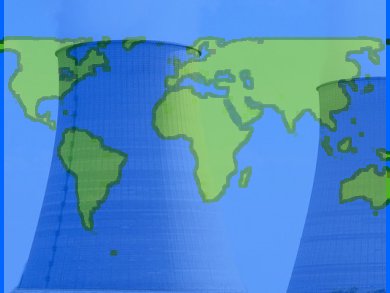The Fukushima Daiichi meltdown was the most extensive nuclear disaster since Chernobyl. Radiation release critically contaminated a “dead zone” of several hundred square kilometers around the plant, and low levels of radioactive material were found as far as North America and Europe. But most of the radioactivity was dumped in the Pacific. Only 19 % of the released material was deposited over land, keeping the exposed population relatively small.
John Ten Hoeve and Mark Z. Jacobson, Precourt Institute for Energy and the Stanford Woods Institute for the Environment, USA, used a 3-D global atmospheric model to predict the transport of radioactive material. Inhalation exposure, ground-level external exposure, and atmospheric external exposure pathways of radioactive iodine-131, cesium-137, and cesium-134 released from Fukushima were accounted for using a linear no-threshold (LNT) model of human exposure. Exposure due to ingestion of contaminated food and water was estimated by extrapolation. A standard health-effects model was used to estimate human exposure to radioactivity.
Radiation may eventually cause anywhere from 15 to 1,300 deaths and from 24 to 2,500 cases of cancer, mostly in Japan. The numbers are in addition to the roughly 600 deaths caused by the evacuation of the area surrounding the nuclear plant directly after the March 2011 earthquake, tsunami and meltdown.
To test the effects of varying weather patterns and geography on the reach of a nuclear incident, the researchers analyzed a hypothetical meltdown at the Diablo Canyon Power Plant, near San Luis Obispo, CA, USA, with identical emissions to Fukushima.
The hypothetical accident may cause 25 % more mortalities than Fukushima despite California having one fourth the local population density due to differing meteorological conditions. The model showed that rather than being whisked toward the ocean, a larger percentage of the radioactivity deposited over land, including population centers such as San Diego and Los Angeles.
- Worldwide health effects of the Fukushima Daiichi nuclear accident,
John E. Ten Hoeve, Mark Z. Jacobson,
Energy Environ. Sci. 2012.
DOI: 10.1039/C2EE22019A




